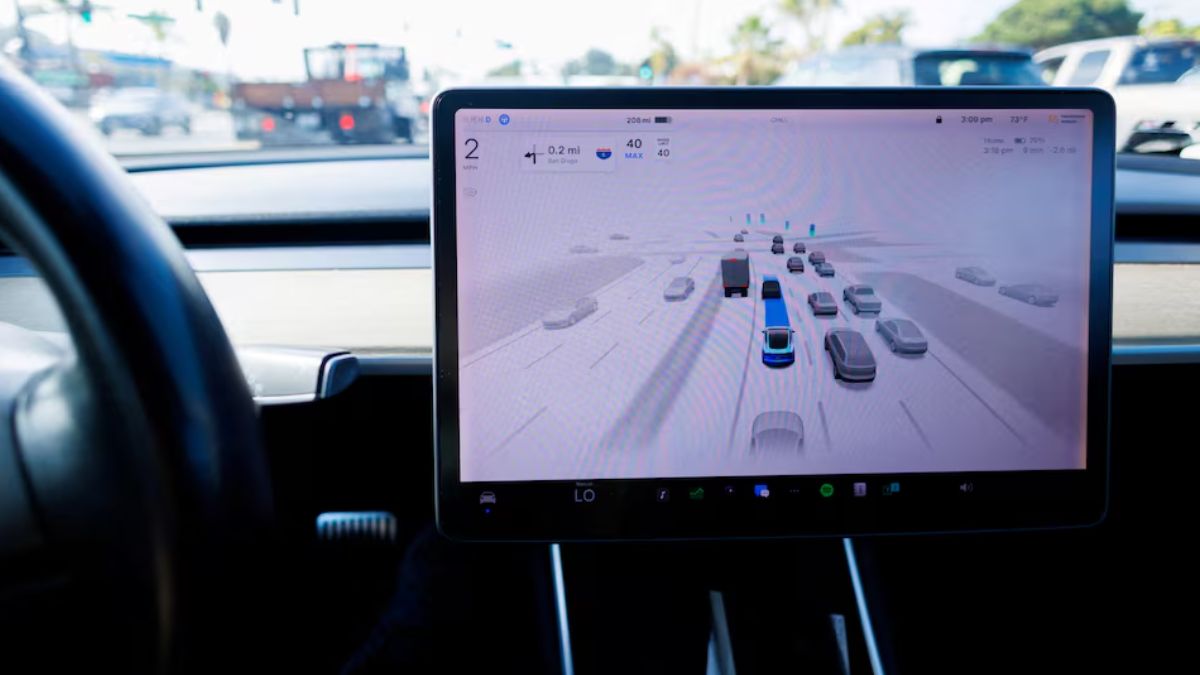Necessary Always Active
Necessary cookies are required to enable the basic features of this site, such as providing secure log-in or adjusting your consent preferences. These cookies do not store any personally identifiable data.
|
||||||
|
||||||
|
||||||
|

In Focus
The National Highway Traffic Safety Administration (NHTSA) announced it will investigate 2.88 million Tesla EVs that operate on the company’s Full Self-Driving (FSD) system. According to Reuters, Tesla’s FSD investigation has been triggered by more than 50 reports relating to crashes and traffic-safety violations.
FSD is a driver assistance system that requires drivers to focus and intervene when the need arises. The national auto safety agency is currently reviewing 58 reports. The reports highlight issues relating to violations of traffic safety rules when using Tesla’s Full Self-Driving, and system include 14 crashes and 23 injuries.
According to NHTSA, the FSD system has encouraged “vehicle behavior” that violates traffic safety rules. The auto safety agency says it has in its possession reports of Tesla FSD EVs moving against the right direction of travel when changing lanes. Some reports show vehicles driving through red traffic lights.
NHTSA also said six reports in its possession show a Tesla car, which had the driver assistance system engaged, “approached an intersection with a red traffic signal, continued to travel into the intersection against the red light and was subsequently involved in a crash with other motor vehicles in the intersection.”
This is not the first time the NHTSA is investigating Tesla’s FSD system. In October, 2024, the agency launched an investigation into the system a week after the EV maker revealed its robotaxi. NHTSA commenced the probe after a driver who was using the FSD software hit and killed a pedestrian.
In the same year, a Houston driver told the auto safety agency that Tesla’s FSD “is not recognizing traffic signals. This results in the vehicle proceeding through red lights, and stopping at green lights. Tesla doesn’t want to fix it, or even acknowledge the problem, even though they’ve done a test drive with me and seen the issue with their own eyes.”
In January, 2025, the auto safety agency launched a probe into Tesla vehicles following reports of crashes. The crashes involved a feature that allowed users to move their vehicles remotely. Tesla started testing Model Y in Austin, Texas in preparation for robotaxi launch June, 2025. The auto safety agency is currently reviewing the deployment of self-driving vehicles.
Tesla’s FSD Investigation at a Glance:
The latest investigation comes at a time when scrutiny into Tesla’s advanced driver assistance software has been growing. In September 2025, Democrat Senators Ed Markey and Richard Blumenthal raised concerns over the rising number of near collisions reported and urged the auto safety agency to investigate the issue.
Tesla’s NHTSA investigation also comes weeks after confirmation of the new NHTSA administrator, Jonathan Morrison. The agency considers the new investigation a preliminary evaluation. The new probe will target 2.88 million Tesla vehicles and could lead to a recall of vehicles which pose unreasonable risk to safety. During the investigation, NHTSA will review Tesla’s FSD behavior when the vehicle approaches railroad crossings.
On its website, Tesla says its FSD system is “intended for use with a fully attentive driver, who has their hands on the wheel and is prepared to take over at any moment. While these features are designed to become more capable over time, the currently enabled features do not make the vehicle autonomous.”
NHTSA announced the latest investigation into Tesla’s traffic violations two days after the EV maker unveiled a new version of its supervised FSD assistance system. The company launched the system as it released the standard versions of Model 3 and Model Y. The new vehicle versions do not come with the driver assistance system.